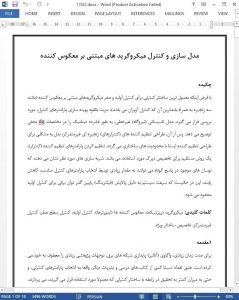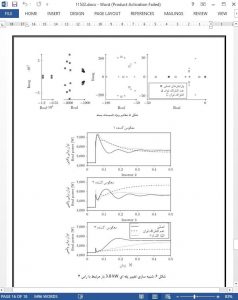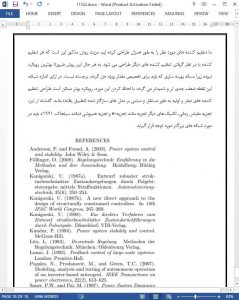Abstract
Assuming the most common control structure for zero and primary control of inverter-based microgrids, i.e. three cascades with the highest one being droop control, the potential benefit of optimizing the control parameters is investigated. A detailed nonlinear plant model is derived that compactly describes the dynamics in local dq-coordinates. Then, the design of the decentralized, cascaded controllers is converted into the problem of designing one centralized static controller with structural restrictions. To tune the controller parameters, a direct method for pole-assignment is used. The simulations show that the oscillations in the transient response can be reduced greatly by choosing appropriate control parameters, while the speed of the system is restricted due to the low-pass filtering of the power for primary control.
1. INTRODUCTION
The stability analysis of electricity grids has been of great research interest for a long time. Yet relatively few textbooks or publications actually treat the selection of the control parameters, and even fewer question the typically used control structure. This might be due to the fact that for large power systems the detailed model often is not available. But when considering microgrids, this should not be an issue. Another reason might be the difficulties arising due to the decentralized nature of grid control. And yet, the occurring problems have long been tackled by the control society, e.g. Litz (1983), Konigorski (1988), Siljak (1991), Lunze (1992).
Combining the modeling approaches broadly used in power system stability analysis and the results from the control society on the design of decentralized controllers, we tune the controller parameters of a microgrid to improve its transient behavior.











